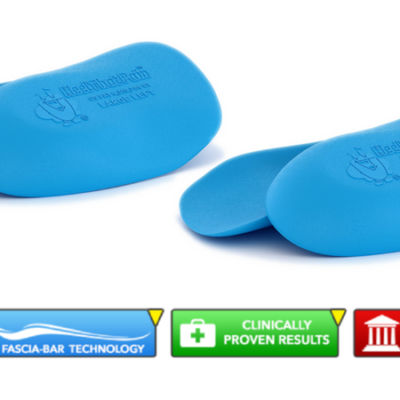Plantar Fascia Ruptures and Tears
Plantar Fasciitis sufferers are at risk for two types of physical injury: ruptures and tears of the plantar fascia ligament. This article provides an easy-to-read summary of both types of injuries and describes common treatment options.
Plantar Fasciitis is a condition involving the plantar fascia ligament, which spans the arch of the foot from heel to ball. In a healthy foot, this elastic band of tissue springs and stretches within a healthy range of motion. In the presence of Plantar Fasciitis, the ligament experiences movement beyond this normal range, resulting in microtrauma, tears, and inflammation.
The most common symptom of Plantar Fasciitis is heel pain, which is often most severe upon arising in the morning, but lessens as the day goes on. If you are experiencing pain in one or both heels, take this as a warning sign that you may be developing Plantar Fasciitis. In many cases, ruptures and tears of the plantar fascia ligament can be avoided with preventative care.
What is a Plantar Fascia Rupture?
This painful injury makes headlines because of the number of athletes – especially professional basketball players – who experience it. However, plantar fascia ruptures can occur in anyone who participates in high-impact exercises, such as jogging, or from having an abnormal gait due to structural anomalies, being overweight or wearing improper footwear.
Ruptures of the plantar fascia ligament may be signaled by a popping sound, intense pain, swelling and bruises appearing on the foot. If your plantar fascia has ruptured, you will typically be unable to rest your full weight on that foot or to push off on it. If you believe you’ve experienced a rupture, you should seek immediate medical help. Surgery is generally not indicated in such cases. Rather, your doctor will typically recommend up to two weeks of rest, the use of a removable walking boot and crutches. You may receive a referral to a physical therapist or instructions for carrying out foot and heel stretching exercises on your own.
Once you are able to bear weight on the injured foot again, you will likely receive a recommendation for the use of a custom orthotic shoe insert designed to support and improve the mechanics of the foot. Studies are currently being conducted on the use of Platelet Rich Plasma injections as a means of hastening recovery and providing long-lasting results, but the evidence is, as of yet, inconclusive. The average adult will recover from a plantar fascia rupture in three to four months.
Avoiding the pain of a plantar fascia rupture and the disruption in daily life it creates should be the goal of anyone experiencing onset symptoms of aching in the heel. Preventative use of a Plantar Fasciitis-specific orthotic insert, such as Heel Seats, can help you ward off serious injury to the plantar fascia ligament before it happens. Our patented Fascia-Bar orthotics are endorsed by athletes and by the American Podiatric Medical Association.
What is a Plantar Fascia Tear?
Though the term is sometimes used interchangeably with ‘plantar fascia rupture’, a tear in the plantar fascia may have a less pronounced onset. Tears in the ligament tissue can be so small that no popping sound will be heard, and pain may develop so gradually in the heel that the sufferer is not aware of a specific moment at which the injury occurred. As with a rupture of the plantar fascia ligament, tears can result from high-impact exercise, insufficient rest periods, use of ill-fitting footwear, structural conditions of the foot that result in an abnormal gait, obesity and the normal aging process.
If left untreated, the plantar fascia ligament can become subject to larger or more numerous tears, weakening the fiber of the plantar fascia and resulting in increased pain to the point of debility. If you have been diagnosed with Plantar Fasciitis, preventing tears or healing existent ones depends upon a combination of rest, icing, heel stretching exercises and daily use of a custom orthotic insert.
The Fascia-Bar technology present in Heel Seats is the culmination of 30 years of research and is unique on the orthotics market. A clinical study proves Fascia-Bar technology to be twice as effective in promoting healing from Plantar Fasciitis as a leading name brand. Heel Seats realign the biomechanics of the foot, gently stretching and lifting the injured plantar fascia ligament back into a healthy position. At the same time, these remarkable inserts apply therapeutic acupressure to the heel bone, stimulating the body’s natural ability to heal itself. More than 90% of Heel That Pain’s customers experience significant relief from their symptoms.
Don’t Ignore the Warning Signs of Heel Pain
Pain is actually a gift in that it is your body’s way of signaling that something has gone wrong. It is never safe to ignore heel pain. By acting quickly, you may prevent plantar fascia ruptures and tears with a combination of rest, icing, stretches and the use of an appropriate orthotic. In addition to preventing serious outcomes, Plantar Fasciitis shoe inserts can speed recovery and prevent future injury.
Ready to find the right treatment for your heel pain? Shop our orthotic solutions.
Do you have questions about symptoms of heel pain you’ve recently noticed?






